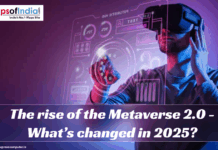Special effects, or SFX, are visual tricks or techniques filmmakers employ to create illusions in movies and other visual media that could be impossible or impractical in a live-action scene. In addition to visual effects like motion-capture photography, matte paintings, and stop-motion animation, special effects include mechanical effects like pyrotechnics, miniatures, and prosthetic makeup. Science-fiction and fantasy films frequently use special effects, which call for developing fictional characters, objects, and situations.
Special effects are digital or physical and are employed to make a movie more captivating, realistic, or imaginative. Practical special effects use physical items and methods recorded on camera while filming. Makeup, prosthetics, animatronics, miniatures, pyrotechnics, and more are examples of practical effects. Since the beginning of cinema, these methods have been employed to produce illusions, including character transformations, explosions, and vanishing acts.
Green screens, digital compositing, motion capture technologies, and computer-generated imagery (CGI) are all essential components of digital special effects, also called visual effects or VFX. All to produce realistic or fanciful images that are difficult to make with just practical effects. Because digital special effects can be smoothly integrated with live-action material, they have become increasingly common in contemporary filmmaking.
History
The history of special effects in films begins with the very beginning of the chronology of cinema history. To produce illusions on screen, filmmakers started experimenting with different methods. Silent films contain some of the first instances of trick photography and practical effects. The absence of synchronised music meant that they depended mainly on visual narrative. At this period, stop-motion animation was a widely employed method. Objects or persons were filmed one frame at a time to provide the appearance of motion and then moved slightly in between shots. This method was employed in films such as The Lost World (1925), which used stop-motion animation to create lifelike dinosaurs.
Movies like Jurassic Park (1993) demonstrated how computer-generated imagery (CGI) might be used to produce realistic monsters on screen in the 1990s. By using CGI and animatronics, the movie gave viewers the impression that dinosaurs were once again roaming the planet.
Presently, filmmakers are still pushing the limits of visual effects technology. CGI is effectively used in films like Avengers: End Game (2019), which combines hundreds of characters in immense fight sequences. Considering that ground-breaking cinema may be in the works as long as technology keeps improving is thrilling.
Use of Special Effects:
- Improving the look of objects and characters.
- Constructing fanciful or realistic settings.
- Enabling impossible feats.
- Illustrating unearthly entities and animals
Types of Special Effects
There are two primary types of special effects in movies: digital and practical. Because each special effect has advantages and disadvantages, filmmakers frequently mix the two to achieve the desired effect.
-
Practical Effects
Creating physical illusions on set using miniatures, pyrotechnics, prosthetics, animatronics, makeup, and props is known as practical effects. These effects are frequently employed to give a picture a feeling of realism or tangibility, and they work exceptionally well when depicting tangible items like automobiles, explosions, or animals. By giving performers real materials to manipulate on set, practical effects may also aid actors in becoming more in character. However, producing practical effects may be costly and inefficient. They do not always give the same degree of flexibility or control as virtual effects. Regardless of these drawbacks, many directors still choose to employ practical effects as they provide a distinct visual appeal and convey realism.
-
Visual Effects
Visual effects, sometimes shortened to VFX, are computer effects used in movies and other media to produce or improve imagery that is impossible to accomplish practically. These effects can be as basic as combining several parts to make a cohesive shot or as sophisticated as simulating weather, physics, or other natural occurrences. Moreover, visual effects can be utilised to produce fantasy animals, settings, or occasions that are not feasible to capture on camera. Visual effects may be expensive and time-consuming to create. They even provide filmmakers with a lot of innovative latitude. In addition, if badly done visual effects seem artificial or out of context, they can lower a movie’s overall quality. Filmmakers must thus carefully evaluate how they utilise visual effects to create the desired impact while preserving plausibility.
Function of Special Effects in Storytelling
Special effects may improve a movie’s story and emotional impact by giving viewers a more immersive and captivating experience. By bringing a filmmaker’s vision to life on screen, special effects enable audiences to engage with characters and plots in novel and compelling ways. They may also improve a movie’s storyline by evoking a feeling of reality or otherworldliness that captivates audiences.
For instance, CGI was used in the 2013 film Gravity to help depict the sense of weightlessness and space peril. Thus, the viewers feel they are present with the characters. Special effects may also increase emotional impact by using visual signals that support essential concepts or ideas in the narrative. The capacity of special effects to provide spectacular images is another way to heighten a movie’s emotional effect.
With new technology and methods, the future of special effects seems bright, as filmmakers will keep developing creative ways to engage viewers with visually stunning experiences. Effective use of special effects may help a filmmaker realise their vision on screen. It helps improve a film’s story and emotional impact, which will inspire and amaze viewers. Filmmakers today have access to a unique array of tools for producing visually captivating and emotionally convincing experiences, ranging from motion capture technology to computer-generated imagery and real effects.



